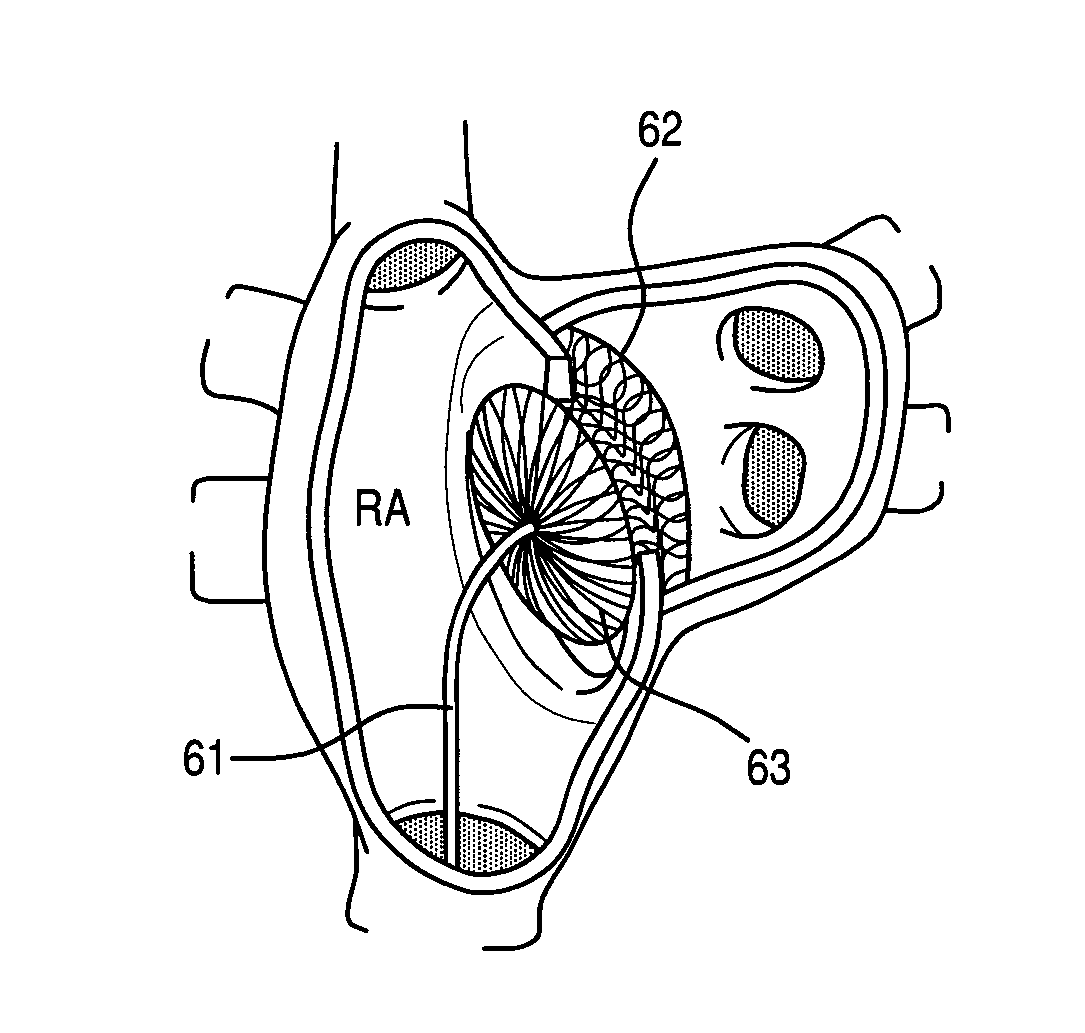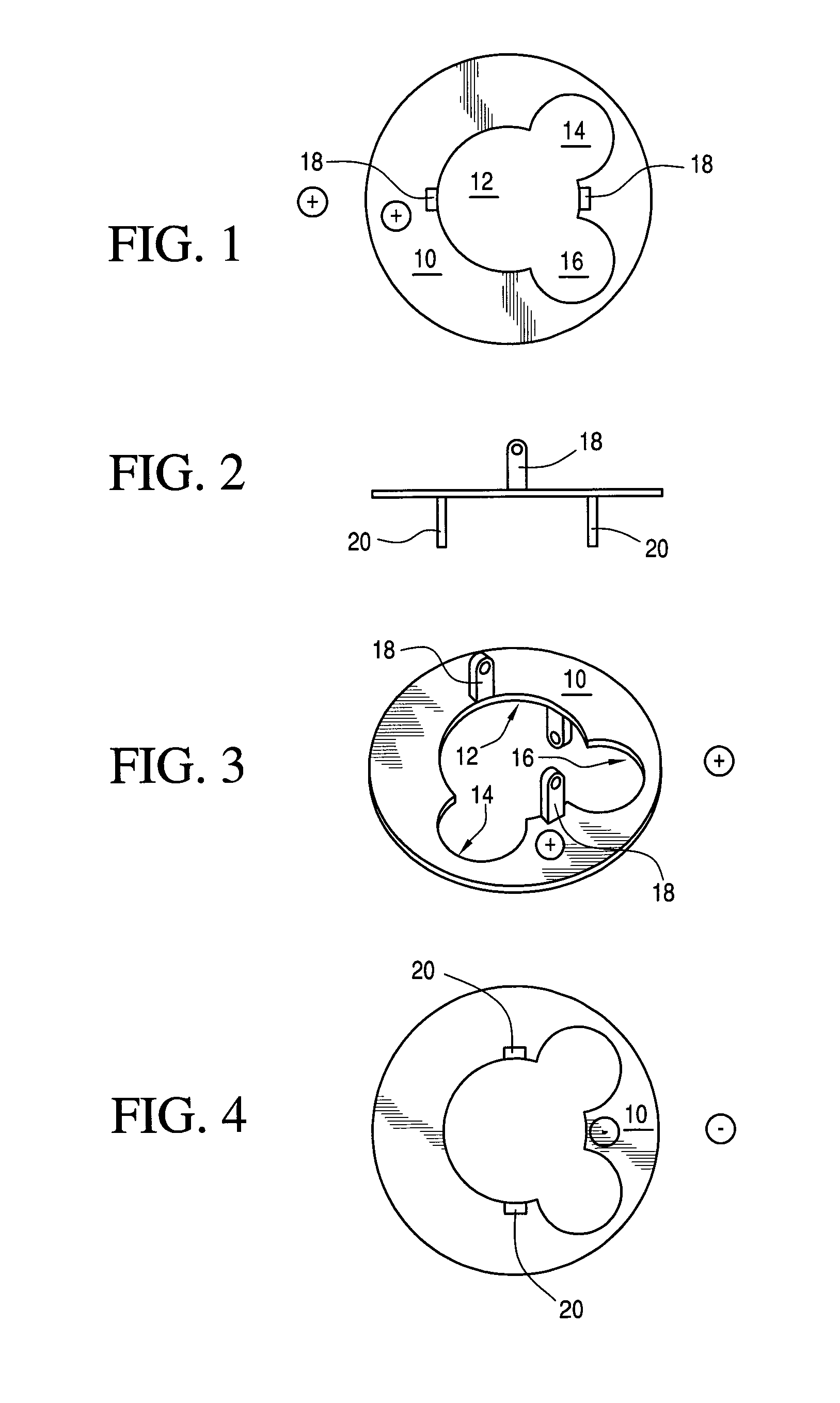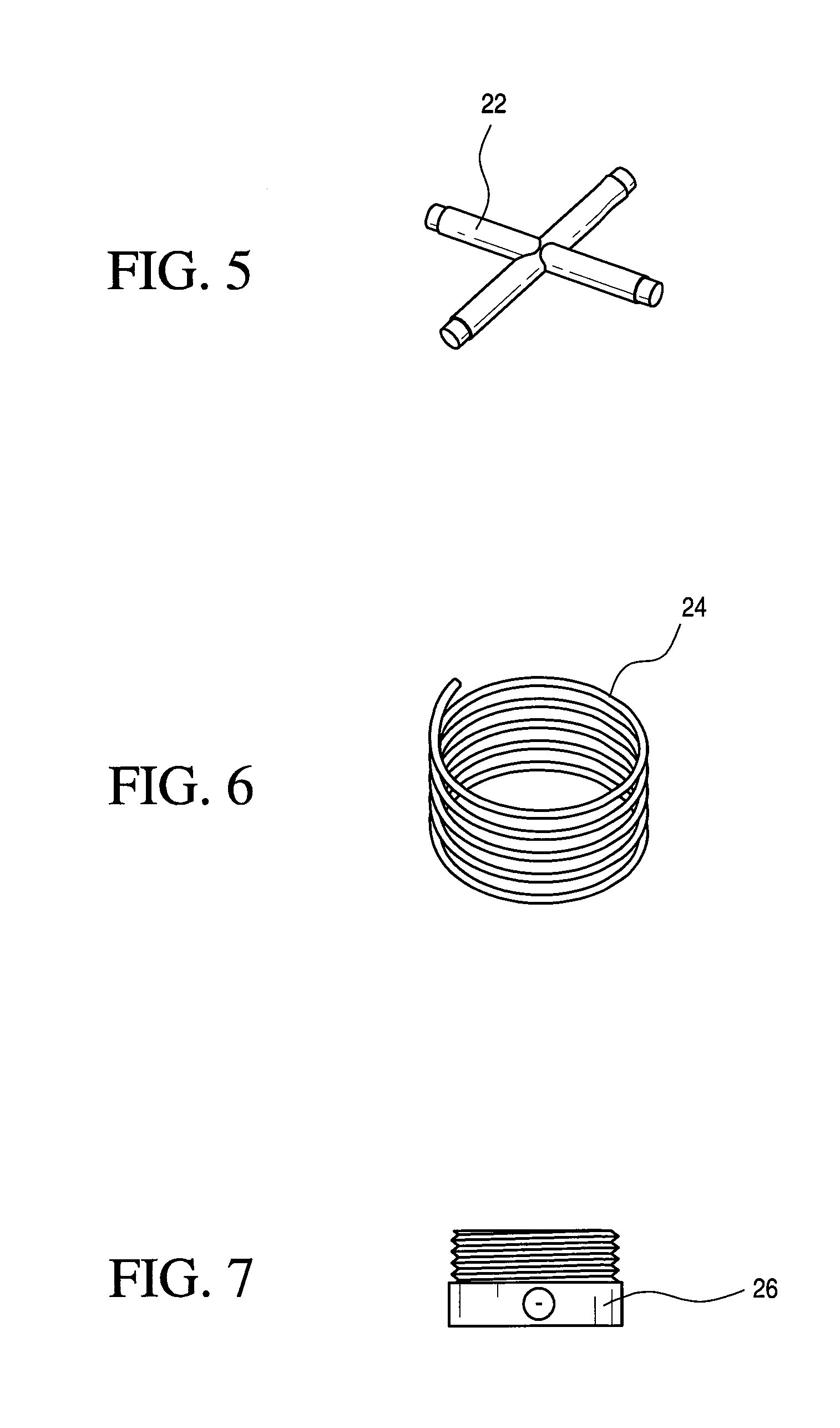Atrial Septal Occluder Device and Method
a technology of occluder and atrial septum, which is applied in the field of medical cardiac catheterization, can solve the problems of complex anatomy of asds, the size of asds is simply the size of the defect even with adequate rims, and the difficulty of device implantation
- Summary
- Abstract
- Description
- Claims
- Application Information
AI Technical Summary
Benefits of technology
Problems solved by technology
Method used
Image
Examples
Embodiment Construction
[0044]As illustrated in FIGS. 1-4, a neck portion 11 of an atrial septal occluder in accordance with the present invention includes a plurality of stainless steel discs 10 having a generally circular cross section with a 2-4 mm diameter and that includes a plurality of connected segments. Each of the discs 10 defines three overlapping passageways, 12, 14 and 16. A first or central passageway 12 includes an upper coil spring portion extending through the center of the disc and held in place by upper and lower cross members that act as universal joints by being rotatably mounted in a pair of upwardly extending hinge members 18 and by a pair of downwardly extending hinge members 20.
[0045]As illustrated more clearly in FIG. 2, each of the discs 10 include a pair of upperwardly extending hinge members 18 and a pair of downwardly extending hinge members 20 on the opposite side of the disc 10.
[0046]As shown in FIG. 1, each of the discs 10 include a left pulling rod opening 14 and a right p...
PUM
 Login to View More
Login to View More Abstract
Description
Claims
Application Information
 Login to View More
Login to View More - R&D
- Intellectual Property
- Life Sciences
- Materials
- Tech Scout
- Unparalleled Data Quality
- Higher Quality Content
- 60% Fewer Hallucinations
Browse by: Latest US Patents, China's latest patents, Technical Efficacy Thesaurus, Application Domain, Technology Topic, Popular Technical Reports.
© 2025 PatSnap. All rights reserved.Legal|Privacy policy|Modern Slavery Act Transparency Statement|Sitemap|About US| Contact US: help@patsnap.com



